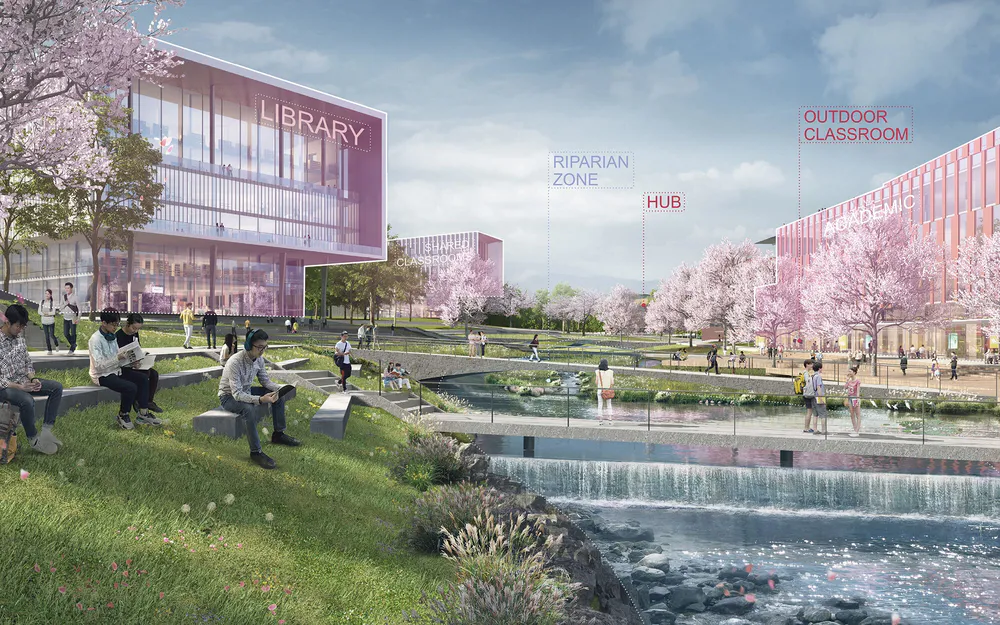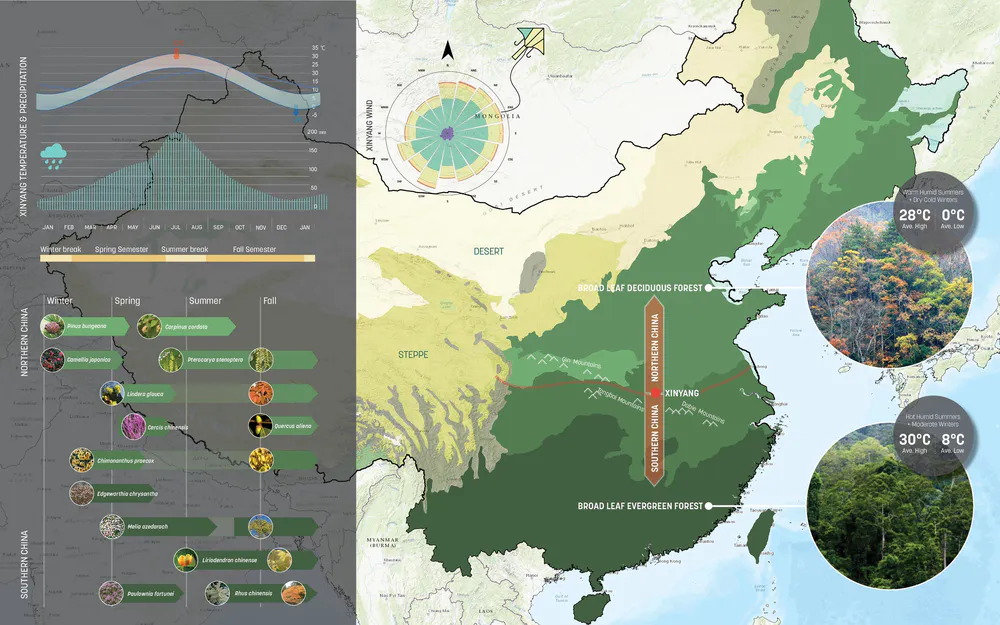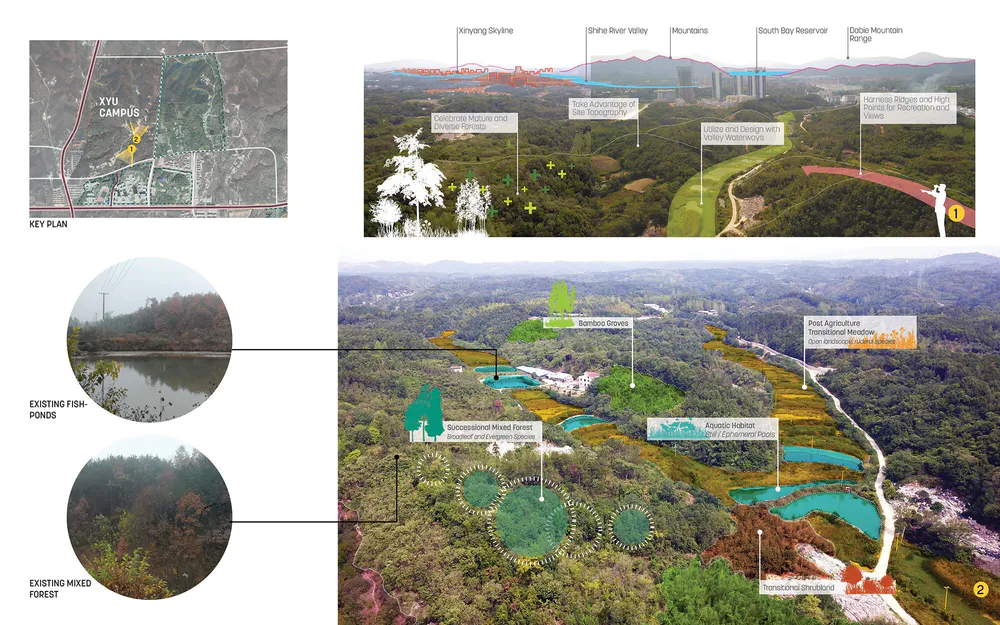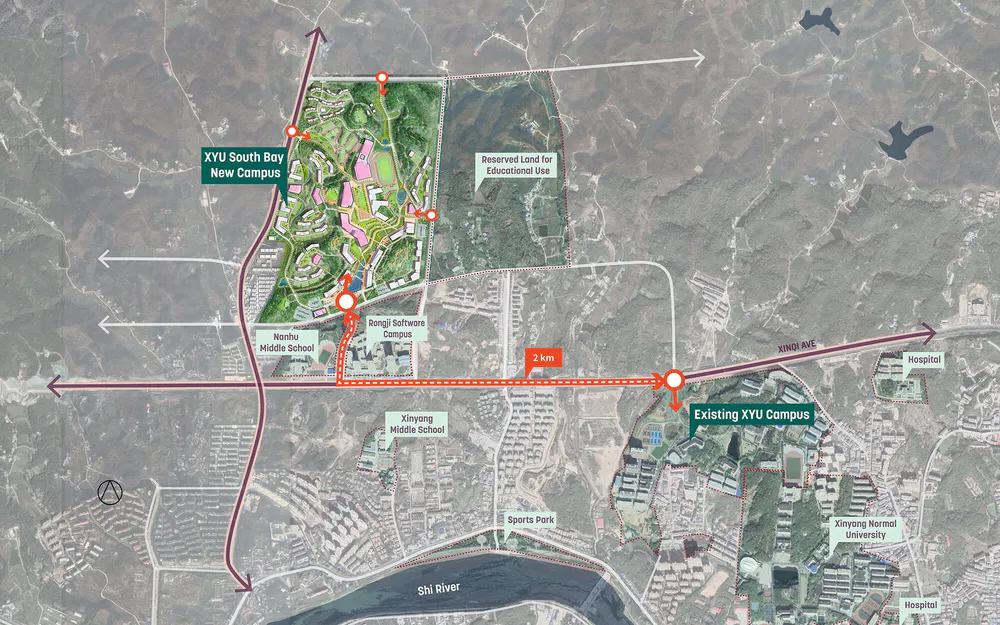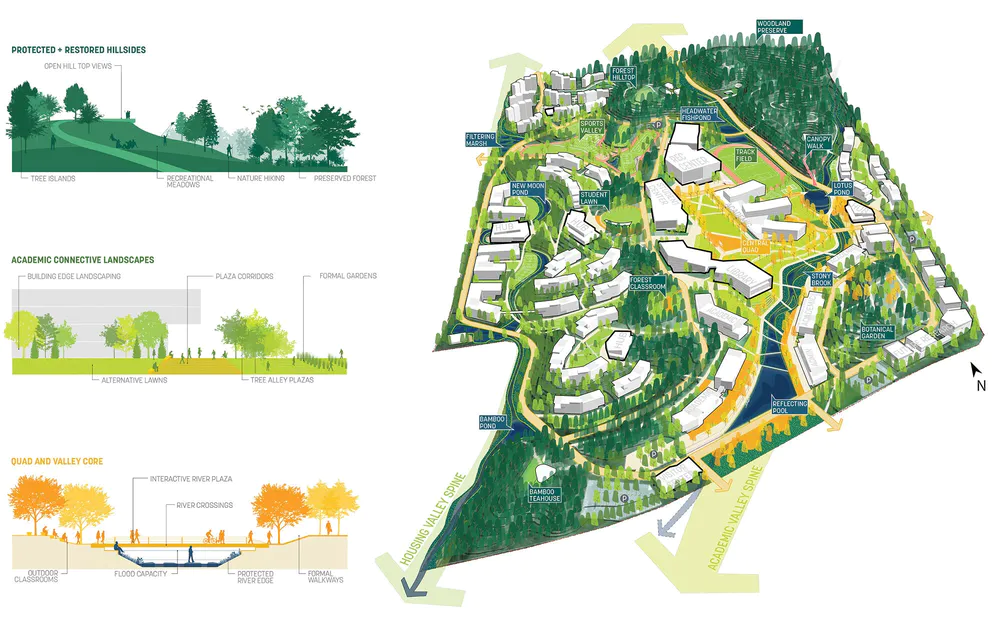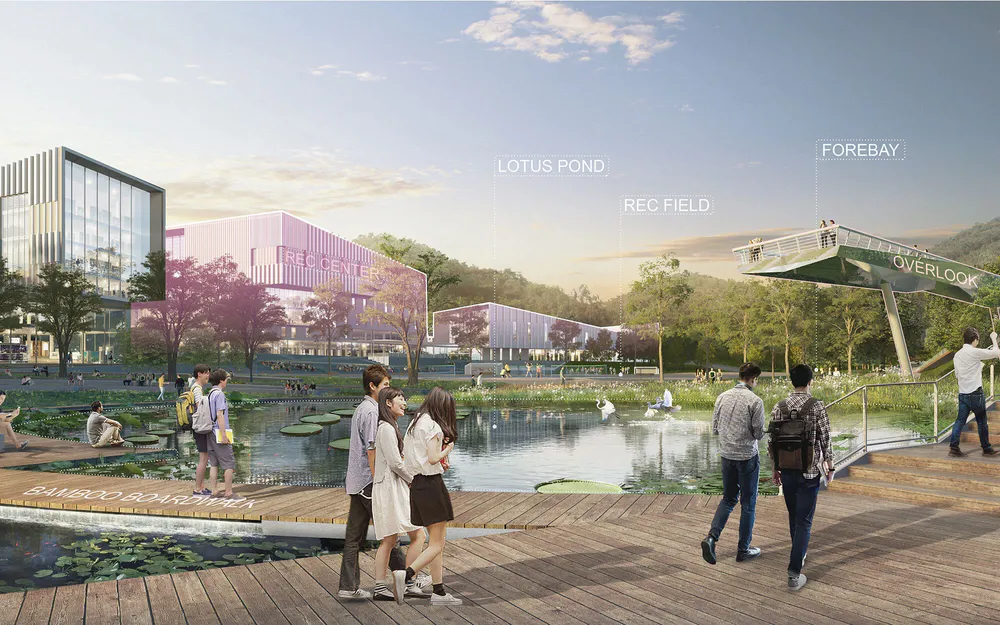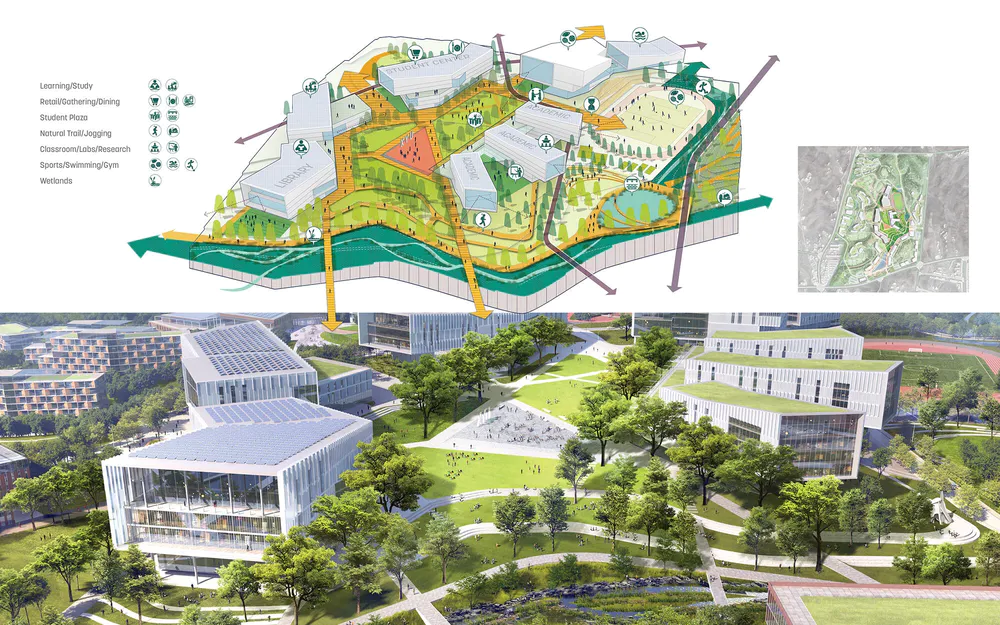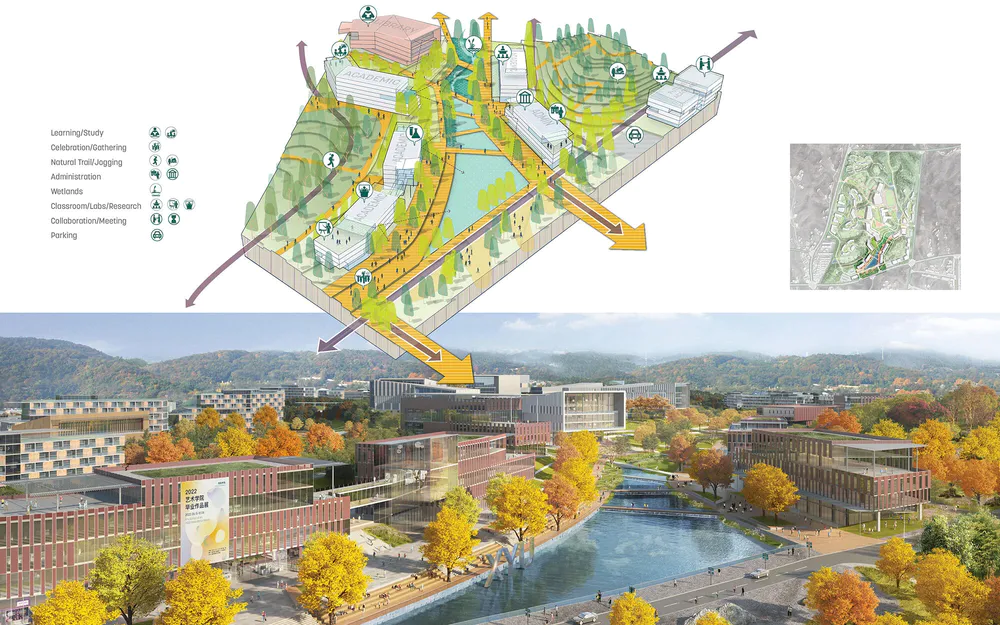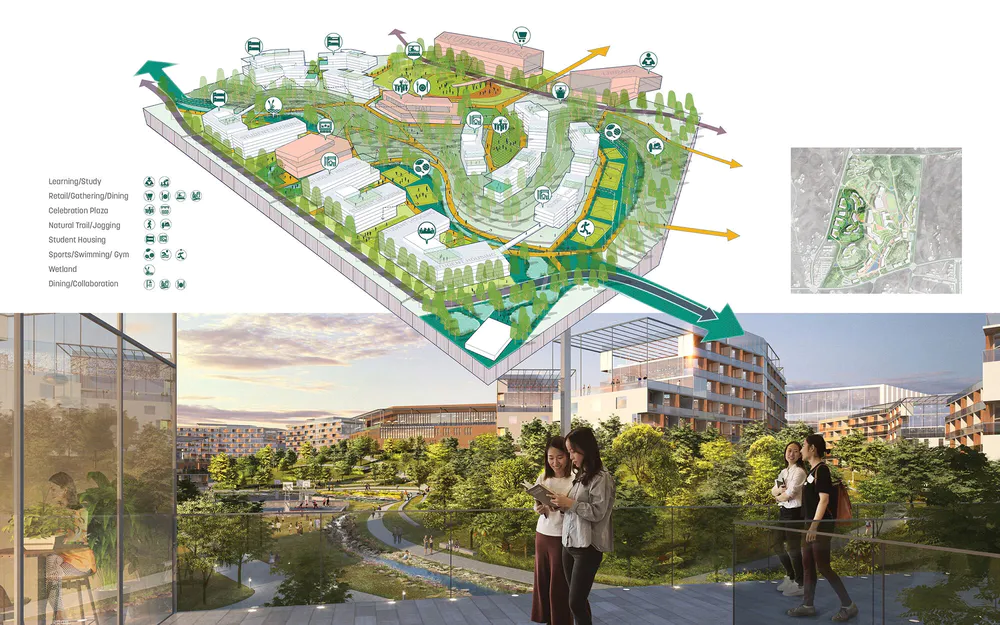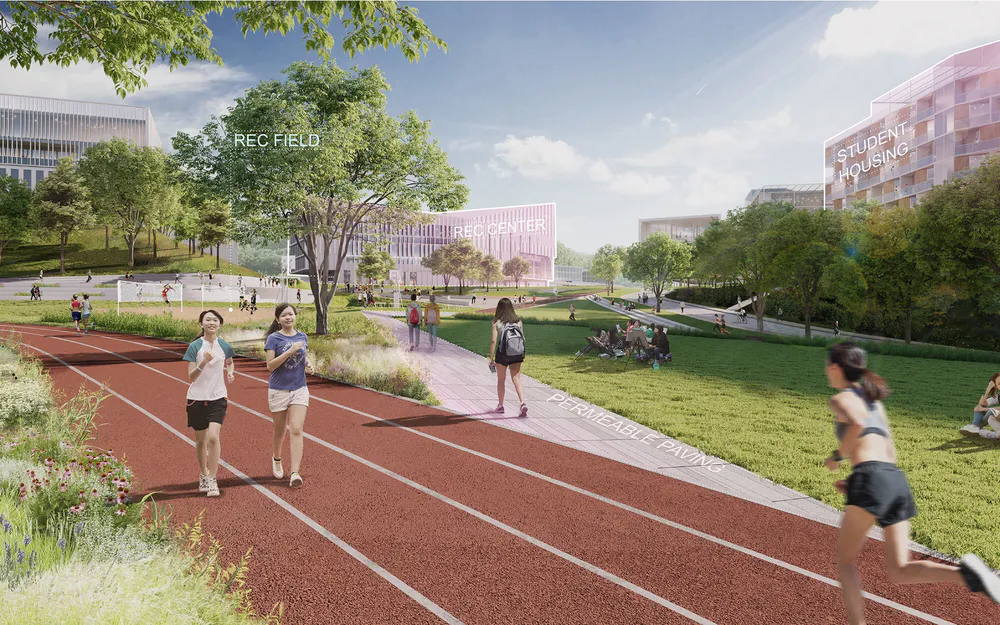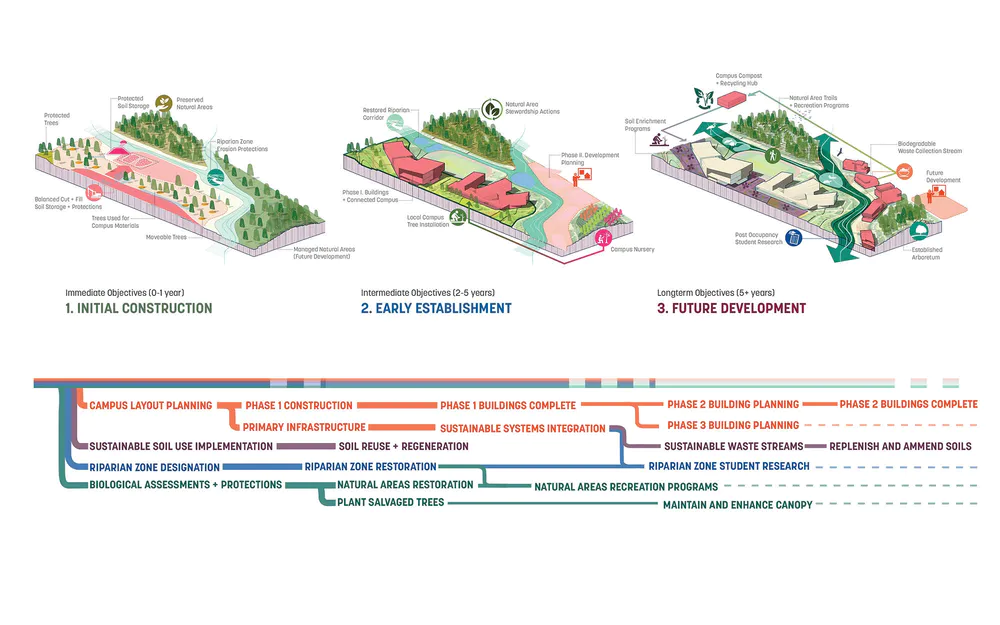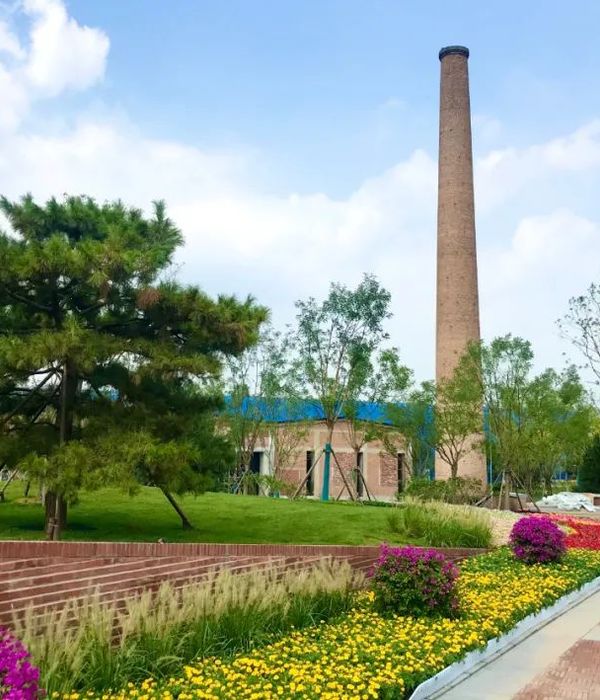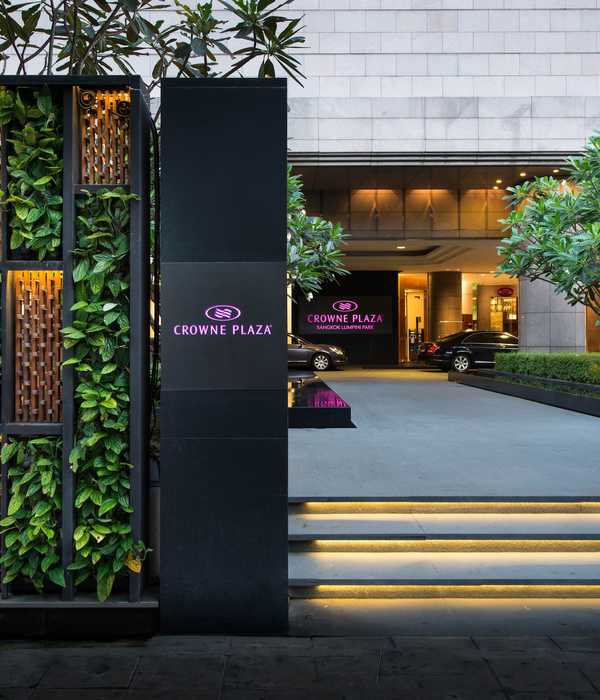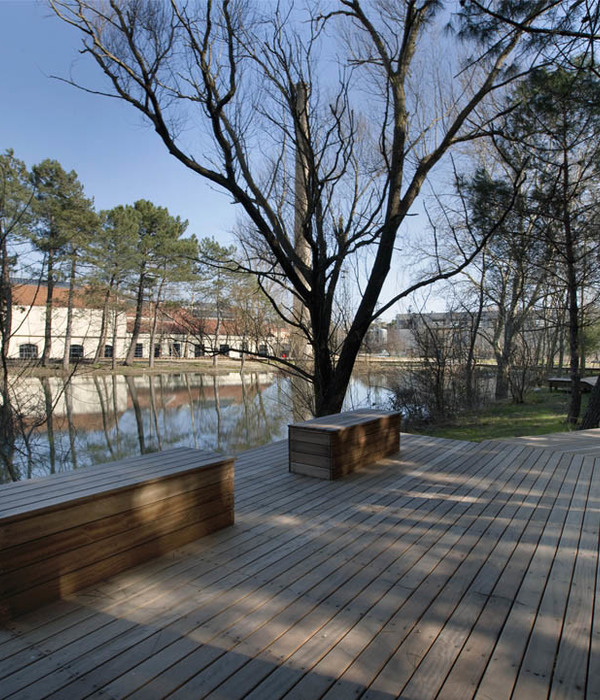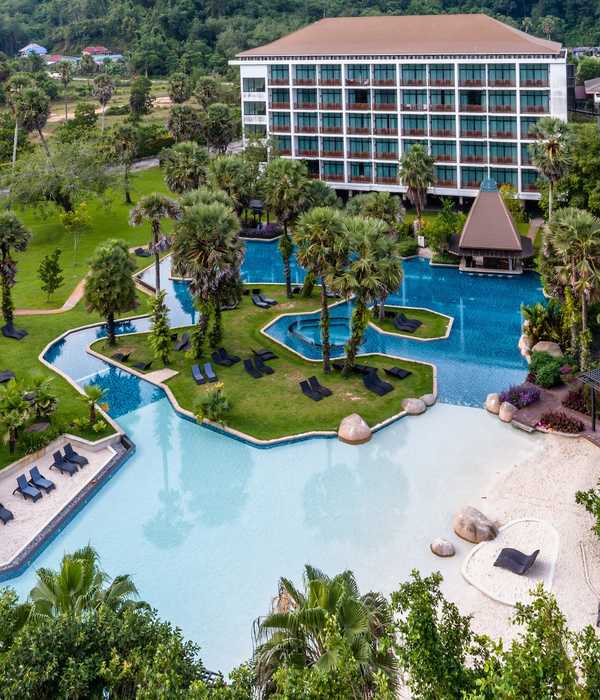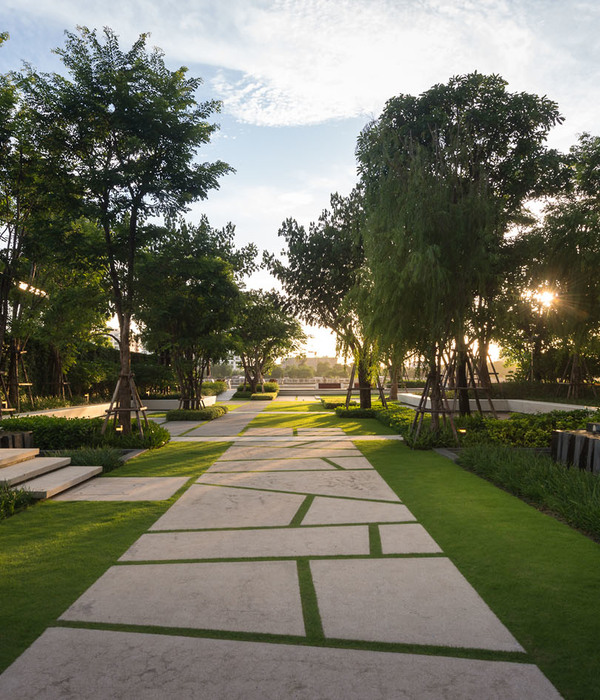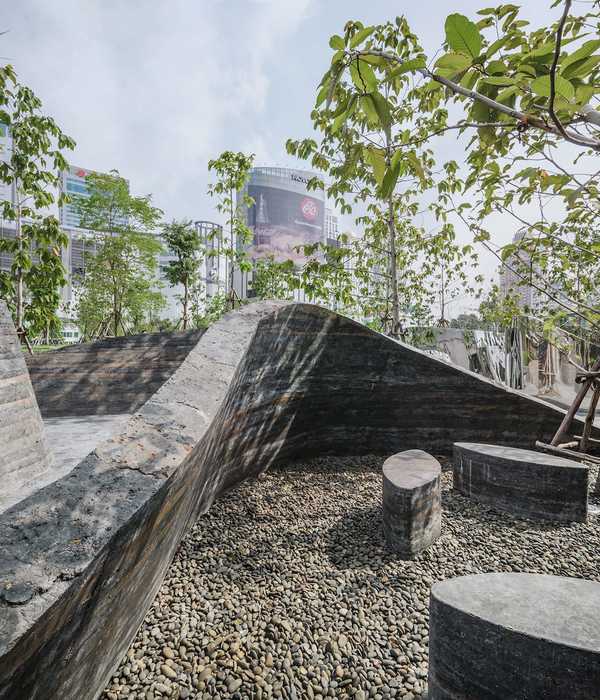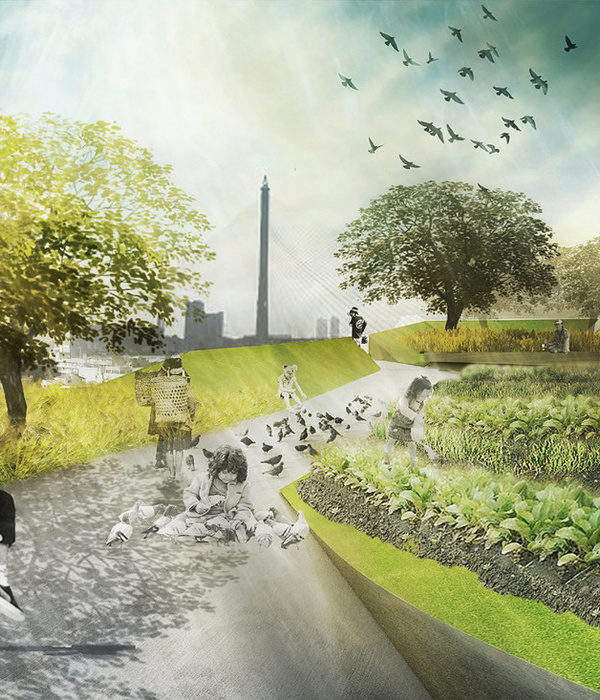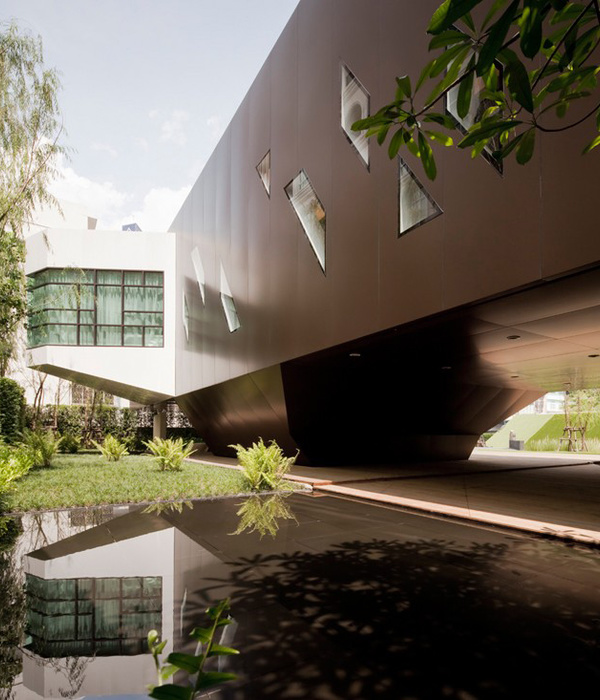Xinyang University South Bay Campus Master Plan
Architect:Sasaki
Location:Xinyang, Henan, China; | ;View Map
Project Year:2022
Category:Masterplans;Universities
The master plan for Xinyang University’s (XYU) new campus sets the university apart as a 21st-century liberal arts institution that nurtures ecologically-minded and socially conscious living-learning communities. From the outset, the university leadership and Sasaki developed a bold vision to integrated social, economic, and educational aspirations to create an alternative model to the current practices of delivering higher education in China. Sasaki’s highly collaborative and iterative planning process is informed by thorough research of XYU’s current pedagogy and the site’s characteristics, ecoregion, and climatic conditions.
Today, the majority of China’s leading universities and colleges are state-owned. However, the landscape of higher education is quickly evolving, paving the way for private colleges and joint venture international universities to envision a more diverse education system that meets China’s increasingly dynamic societal needs.
Xinyang University’s new South Bay expansion answers this charge by planning five liberal art schools in a scenic living-learning environment that will increase the university’s enrollment by an additional 17,000. The university is committed to developing a culture that integrates learning with the campus’s rich ecological settings.
Inspired by the vernacular landscapes, the campus offers spaces ranging from formal quads to an array of naturalistic landscapes that each have their own unique aesthetic and ecological considerations. The masterplan’s diverse plant communities offer seasonal interest for the campus and provide resources for wildlife throughout the year. The campus’s ridgeline and valleys are a primary campus amenity, delineating spaces for student recreation and outdoor learning, and delivering critical ecosystem services such as stormwater management and providing diverse habitat.
A comprehensive array of social, communal and recreational facilities form the armature of campus life. Student housing is organized into a series of tight-knit clusters integrated into the rolling terrain. All of the campus’ buildings and key program destinations are located within a 5-minute walk of one another, making the campus a pedestrian-oriented environment.
Academic and social lives are conceptualized as a seamlessly integrated series of indoor and outdoor gathering spaces and courtyards, connected by interactive hubs, cafés, communal study areas, and recreation facilities to support informal learning and socializing throughout the campus.
The master plan also provides comprehensive strategies for sustainability including efficient energy use, waste management, and topsoil conversation, etc. Leveraging Xinyang’s temperate climate, the buildings are designed to reduce campus energy consumption by implementing natural ventilation and maximizing winter solar gain, coupled with roof photovoltaics and solar water heating facilities. On-site composting and holistic waste management help minimize campus waste output by turning kitchen scraps into nutrient-rich organic matter that can be used to nourish the campus landscape. Topsoil will also be stockpiled and preserved during construction via an efficient phasing strategy to minimize the construction impact on the landscape.
The first phase of the campus will be realized by summer 2022 with subsequent phases following soon after.
▼项目更多图片
